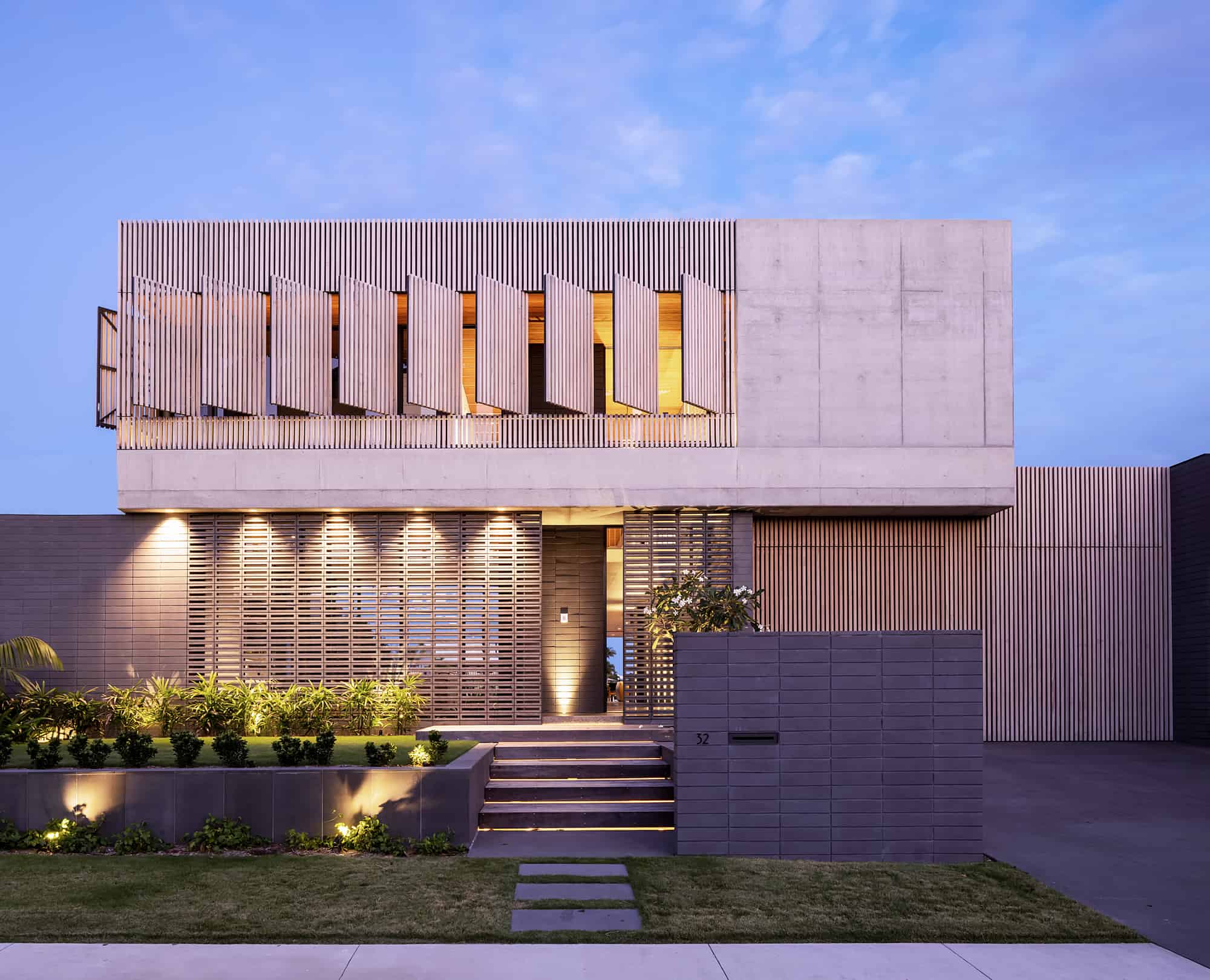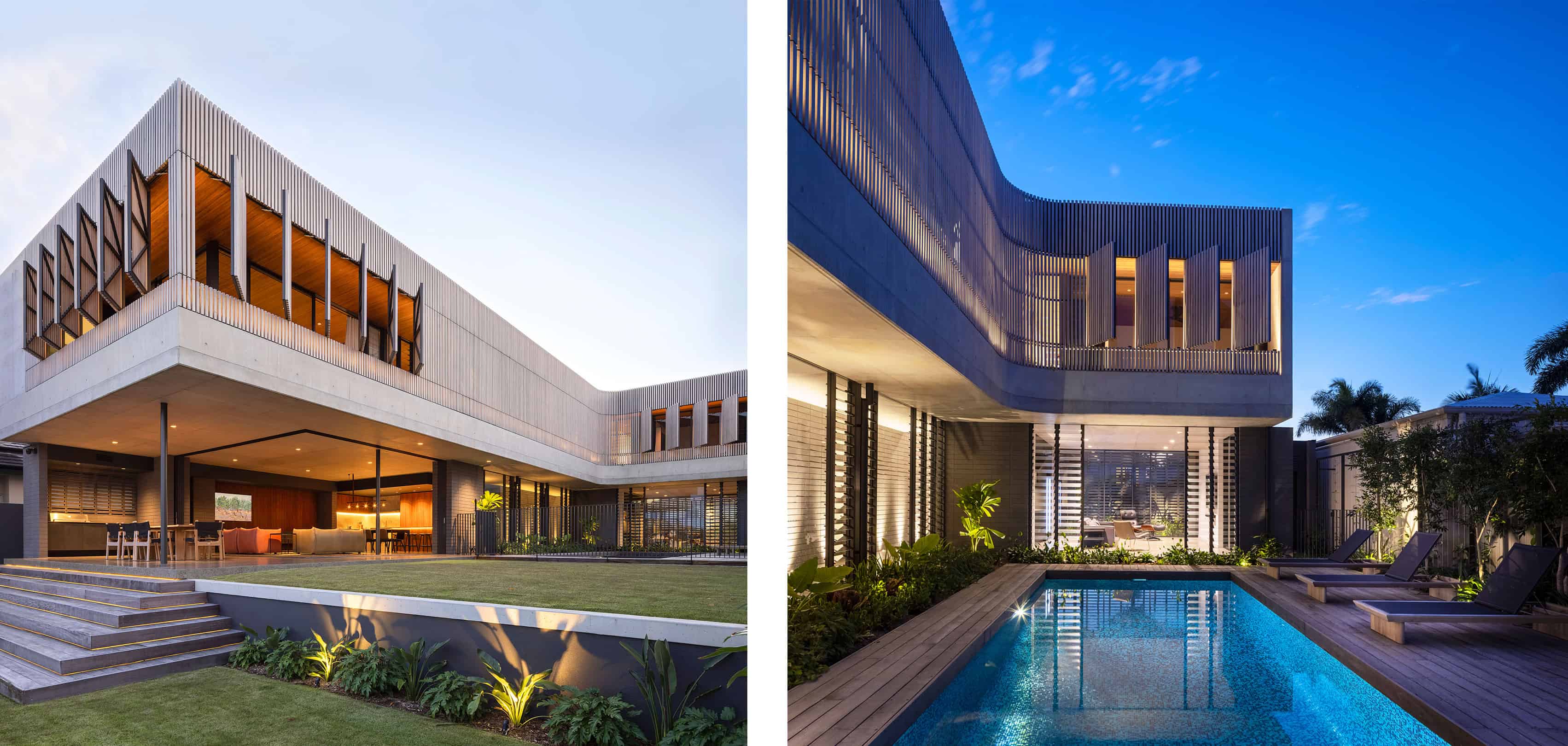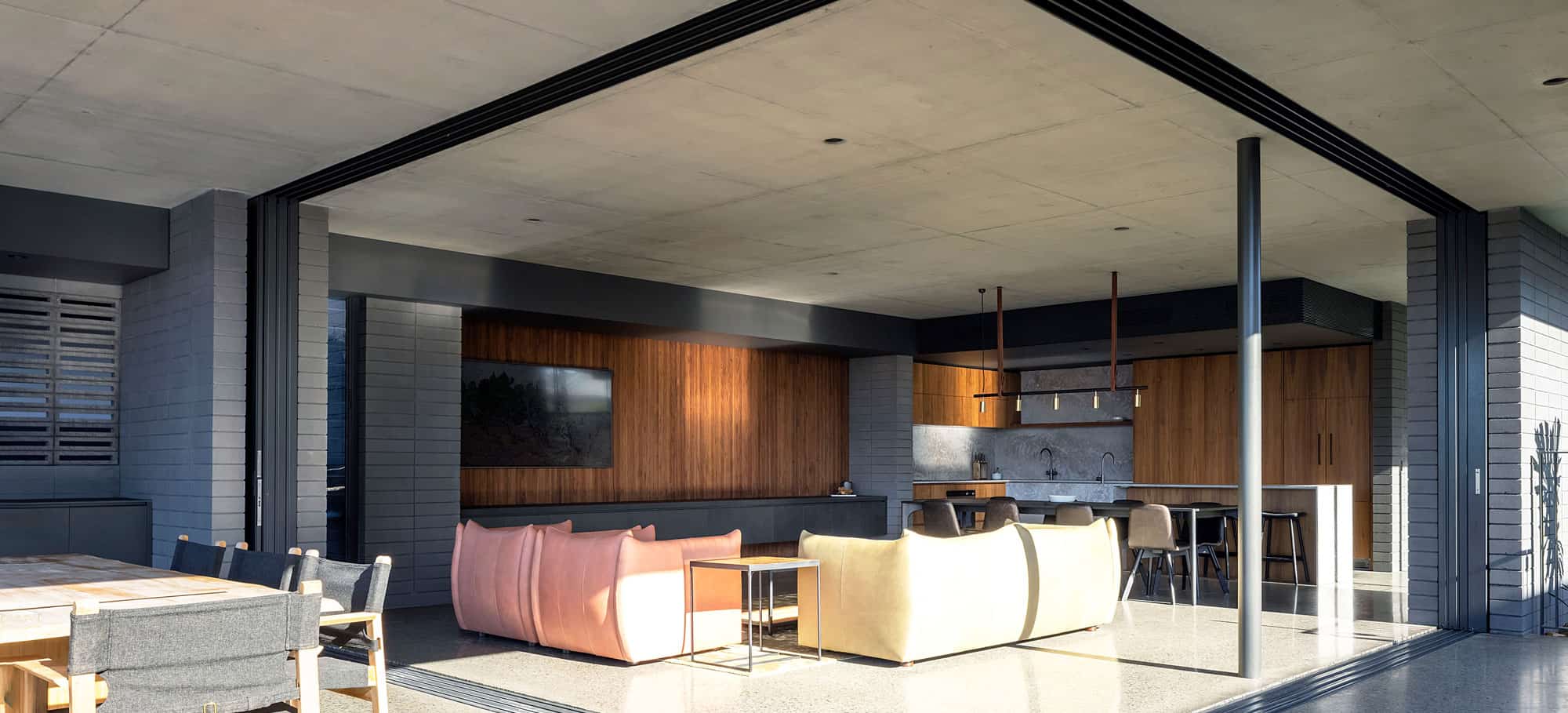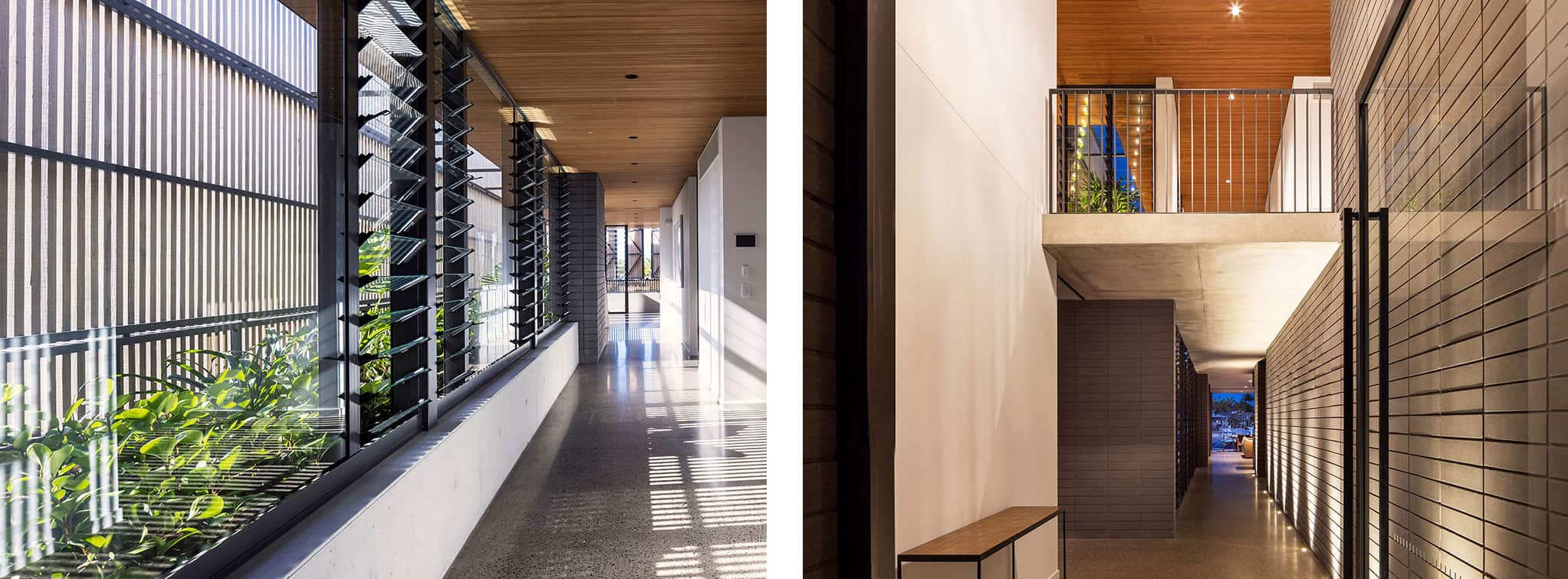Big River Group’s Armourform assists in achieving the unique design character of a contemporary coastal home
Breaking the mould of archetypal coastal design, the Culbara Street Residence, located alongside the Mooloolah River in Queensland, embraces strong structural elements to inform a raw and minimal aesthetic. Born through both the designer’s and homeowners’ love of Brazilian modernist architecture, the brief called for a restrained, low-maintenance material palette which could also accommodate the area’s sub-tropical conditions.
MRA Design worked in conjunction with Gray Construction Group to carefully bring the client’s vision to life. Externally the material palette features masses of off form concrete and timber cladding which is positioned on top of a suspended concrete slab. These solid concrete elements that are visible from the exterior of the house, are also carried through to interior feature walls.
“Key to creating the clean simplicity of the design was to visually reference and embrace the structural elements and supports such as the off-form concrete and stack bond charcoal masonry,” says Michael Rolton, Director at MRA Design.
Simplicity that makes a bold statement, the off-form concrete was built by formwork specialists Luchetta, who utilised leading Australian timber and building supplier, Big River Group’s premium formply product, Armourform to provide the structure as well as serving as the finishing material. Big River’s Armourform F22 is a cost-effective formply with a high strength-to-weight ratio that can be used to achieve a high quality off-form finish and was instrumental in achieving the unique design character of the Culbara Street home.
Bringing a layer of softness to the solid concrete elements, Big River Group, supplied Abodo Vulcan timber battens, which were used extensively throughout the home. Selected for their sustainability, durability and stability, the high-performance timber profile was able to withstand the necessary performance requirements, internally and externally, as well as providing the desired aesthetic for the project.
Internally, the Abodowood was used as a feature shiplap cladding in the living room, upper ceilings and stairwell. “We selected the Abodo in a teak stain to offer a richer contrast to the solid cool elements like the concrete floors,” says Michael.
Externally, the Abodo battens were used on the entirety of the façade and assist in creating the clean form of the upper level. Operable timber batten screens were introduced strategically to exploit key aspects such as views onto the waterfront and to enable cross ventilation, a central feature of Brazilian modernist architecture whereby design elements respond to the climatic conditions.
“The battening provides a layered buffer to the upper-level planters and terraces, reduces the summer heat load, and provides privacy,” says Michael. “Combined with the use of breezeblocks and glass louvres the Abodo screens enable exceptional cross ventilation, minimising the need to use mechanical cooling. The battens also offer an alternate look depending on whether the screens are opened or closed.”
To accommodate the tropical climate of the area, which sees heavy coastal storms and harsh sun year-round, Culbara Street called for honest materials that provided longevity. “This ruled out the use of hardwoods which require constant re-coating, are prone to twisting and also tend to leach onto surfaces below,” remarked Michael. Instead, the use of a ‘sioo:x’ finish on the timber battens, a natural wood coating that provides a long-term weathered look and requires minimal recoating, was chosen. “Externally we were chasing a weathered ‘silvered off’ look so the ‘sioo:x’ finish, which ages to a beautiful patina, was a perfect accompaniment to the adjoining off-form concrete,” Michael says.
Consisting of five bedrooms and four bathrooms, Culbara Street seamlessly brings the outdoors in. Its generous outdoor area features lush green landscaping, which surrounds the home, and a sunlit pool designed with high-gloss, blue mosaic tiles.
“Important to the client was the ability to flow to extensive green ‘break-out’ spaces facing the water,” says Michael. The layout of the home achieves this through a continuous flow between living spaces and the outdoor pool area, which overlooks the river. Inside, the layout encourages open movement throughout the home, with the walls in the hallway featuring floor-to-ceiling louver panels, that allow the house to breathe.
“Culbara Street was an extremely rewarding project to be a part of. It’s rare that the client’s design brief and the designer’s personal taste align so well. The execution of the design by the build team at Gray Construction Group was exceptional, and the finished result is a credit to all involved,” says Michael.
Photo Credit: Robyn Rolton Photographer






